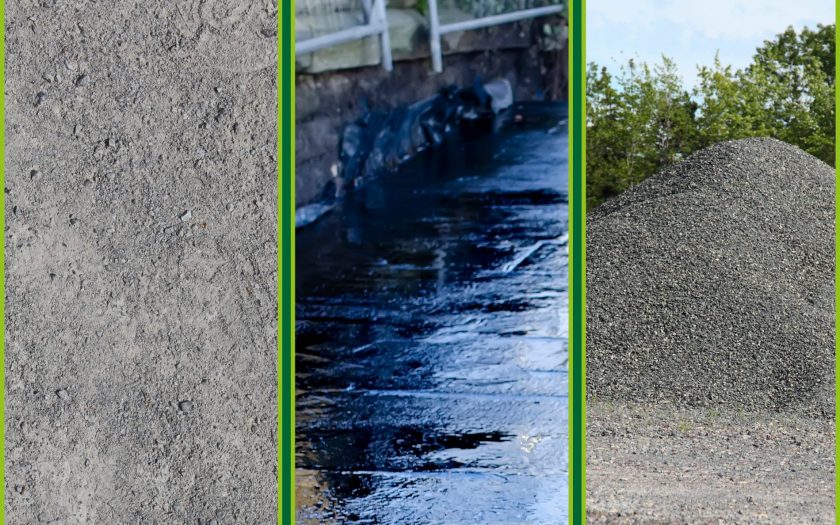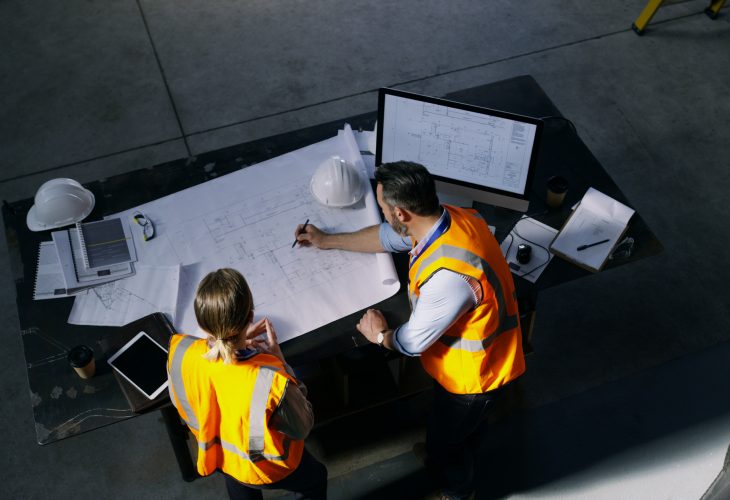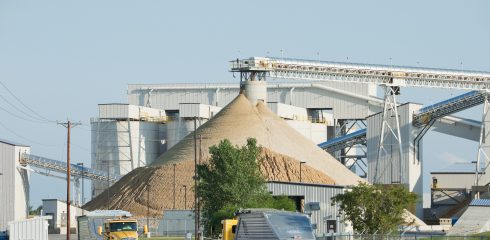
Managing construction materials goes beyond simple storage and organization. It’s about preserving quality, preventing waste, and ensuring safety at every stage of a project. A misstep in handling cement can lead to weak foundations, while improper storage of chemicals can produce serious hazards. Even something as basic as moisture exposure can degrade key materials, causing costly setbacks.
Following best practices ensures that materials remain in optimal condition, minimizing risk and maximizing performance. Here’s how to get it right.
Cement: Protecting the Backbone of Construction
Cement is an essential binding material, but it’s highly susceptible to moisture. Poor handling of cement can weaken its performance, leading to compromised structures.
Storage Best Practices
- Store cement in a dry, ventilated area to prevent moisture absorption.
- Arrange cement bags on wooden pallets, raised at least 15 cm off the ground and away from walls.
- Use a first-in, first-out (FIFO) system to prevent using outdated cement material.
- If storing outdoors, cover cement with plastic sheets or tarps to shield it from rain and humidity.
Mixing and Application
- Measure the water-to-cement ratio precisely to maintain the right balance of strength and workability.
- Utilize cement mixers for consistent blending and to eliminate weak spots.
- Maintain moisture levels in freshly poured cement-based concrete for at least seven days to enhance durability and prevent cracking.
- Avoid excessive handling after cement placement, as disturbances can weaken the curing process.
Construction Chemicals: Enhancing Performance with Proper Care
Construction chemicals, such as admixtures, adhesives, and waterproofing agents, enhance material properties but can deteriorate if not stored or handled correctly.
Safe Storage and Handling
- Follow manufacturer guidelines for temperature and humidity control to prevent chemical degradation.
- Keep containers sealed tightly to avoid evaporation or contamination.
- Label chemicals clearly with hazard warnings and handling instructions for worker safety.
- Ensure proper ventilation in storage areas to minimize exposure to harmful fumes.
Application Best Practices
- Use precise measurements when adding admixtures to concrete. Overuse or underuse can affect strength and setting time.
- Apply waterproofing agents and sealants in suitable weather conditions to ensure proper adhesion and curing.
- Provide workers with personal protective equipment (PPE), including gloves, goggles, and masks, to reduce exposure risks.
- Dispose of chemicals responsibly according to environmental regulations, preventing contamination of soil and water sources.
Managing Other Construction Materials: Preserving Quality and Preventing Waste
Beyond cement and chemicals, construction relies on materials such as aggregates, steel, and plaster. Handling these materials correctly prevents structural weaknesses and project delays.
Aggregates (Sand, Gravel, Crushed Stone)
- Store aggregates on a clean, dry surface to prevent contamination from dirt and organic matter.
- Cover stockpiles to protect against excessive moisture, which can impact concrete mix quality.
- Verify that aggregates are properly graded to improve bonding and durability in concrete applications.
- Regularly inspect aggregates for impurities, as contaminated materials can lead to compromised concrete performance.
Steel and Reinforcement Bars
- Store steel bars above ground to prevent rusting and degradation.
- Apply protective coatings to reinforcement bars used in high-humidity or coastal environments.
- Cut and bend steel according to structural specifications to avoid unnecessary waste.
- Ensure steel is stored in a well-organized manner, preventing accidental bending or damage that could impact its effectiveness.
Bricks, Blocks, and Plaster
- Position bricks and blocks in a level, shaded area to reduce the risk of cracks or structural damage.
- Store plaster and gypsum boards in dry conditions to prevent warping or mold formation.
- Avoid stacking materials too high to reduce breakage and handling risks.
- Rotate stock regularly to prevent older materials from becoming brittle or unusable.
Site-Wide Best Practices for Material Management
Proper material management doesn’t just apply to individual components. A well-organized construction site ensures that all materials are stored, handled, and used efficiently.
Inventory and Logistics
- Use digital tracking systems to monitor stock levels and prevent shortages or over-ordering.
- Schedule just-in-time deliveries to minimize storage space issues while making sure materials arrive when needed.
- Inspect materials upon arrival to confirm they meet quality standards before use.
- Maintain a clear labeling system so materials are easily accessible, reducing delays and confusion on-site.
Worker Training and Compliance
- Ensure compliance with ASTM, ISO, and local building regulations to meet industry safety and quality standards.
- Implement safety protocols to protect workers from hazardous materials.
- Conduct regular training sessions to reinforce best practices and introduce new material handling techniques.
Sustainability and Waste Reduction
- Recycle materials such as crushed concrete, scrap steel, and reclaimed wood to lower costs and reduce environmental impact.
- Incorporate eco-friendly alternatives, like fly ash in cement or recycled aggregates, without sacrificing performance.
- Reduce packaging waste through working with suppliers who offer bulk deliveries or sustainable packaging options.
Driving Efficiency, Safety, and Long-Term Performance
Material management is a critical factor in ensuring construction projects are completed on time, within budget, and to the highest quality standards. When materials are stored, handled, and applied correctly, work progresses more efficiently, costs remain controlled, and structures maintain their durability over time.
At Jenike & Johanson, we provide expertise in bulk material handling, helping construction teams improve efficiency and prevent flow-related issues. Adopting these best practices strengthens operations, enhances material performance, and reduces waste. By maintaining strict control over material quality and handling processes, construction professionals can build safer, stronger, and more resilient structures that stand the test of time.





